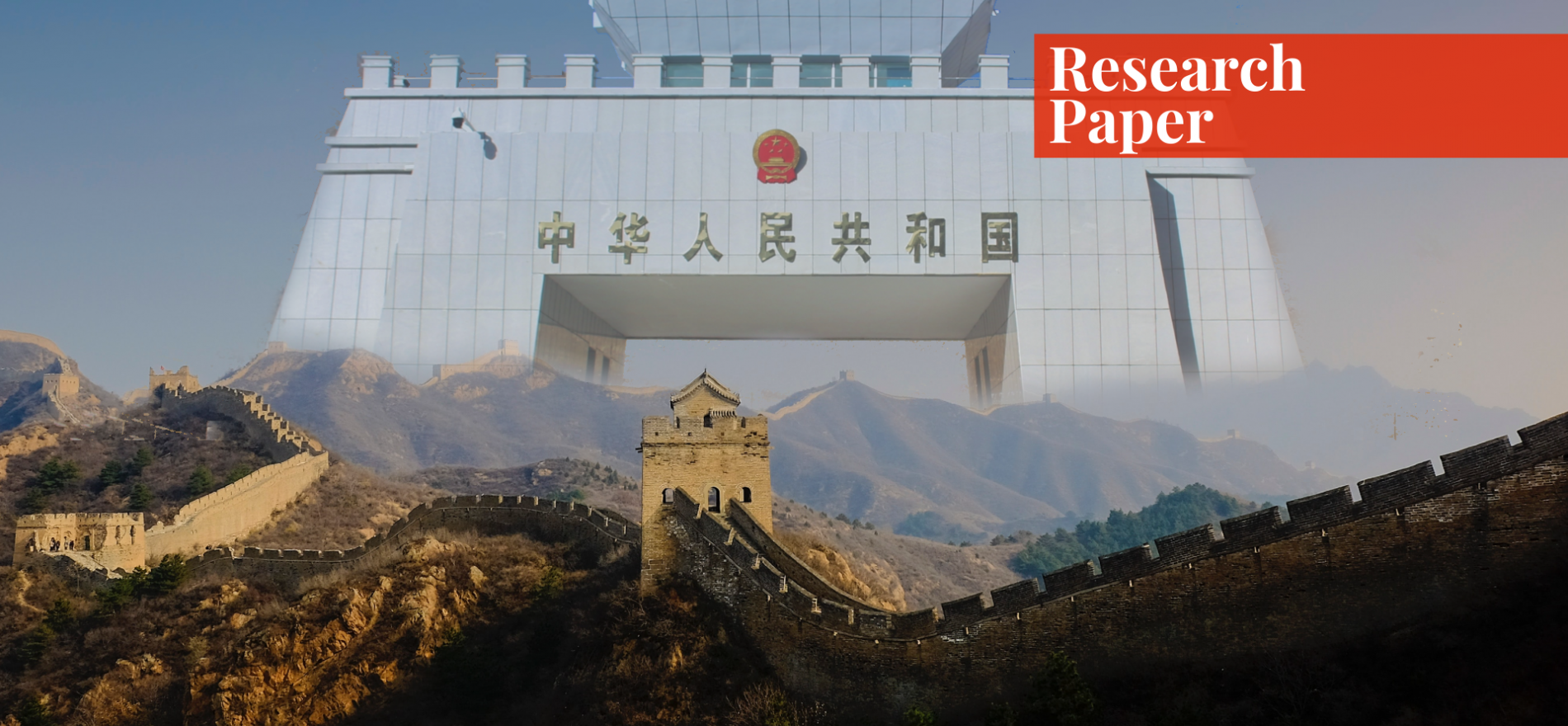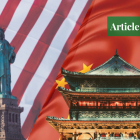Syed Noman Ali Shah is an MPhil scholar at Abdul Wali Khan University Mardan. He is currently working on Pakistan's space strategy under the supervision of Dr. Abdul Shakoor, Chairman Department of International Relations AWKUM.
China’s Grand Scheme: The Belt and Road Initiative
This research is presented on the Chinese policy behind the Belt and Road Initiative, previously known as “One Belt One Road”, and it specifically revolves around Chinese attitude towards Pakistan. Proposed and led by China, the Belt and Road Initiative involves infrastructure investments and ambitious plans to reduce non-massive tariff barriers to trade in Eurasia (including Pakistan) and Africa; it aims at boosting connectivity and commerce across the region, with China as the hub.
The targeted region includes more than 60 countries with about 55% of the world’s total GDP, 70% of the global population, and 75% of known fossil energy reserves. With China’s central government already committing $124 billion into related projects, this initiative will be the largest in history. The obstacles, costs, and potential are all massive.1 The Chinese have made it possible to own this game in its own entity by countering different political, strategic, and economical policies.
China’s soft image has augmented its trade and Investment. Beijing’s policies ignore strategic policies of military deployment and taking over military bases. Rather, it holds onto the field of economic development. Chinese strategic interests are with Japan in the East, with the United States in the West, with the Philippines and Thailand in the South China Sea, and with India in the South, among others.
Moreover, Chinese policymakers are presently devising solutions to pacify the international community with respect to human rights violations in the Chinese territory of Xinjiang. To counter India, China has been assiduously committing itself to its “String of Pearls” policy and the seizure of ports around the Indian territory, that is, the Sri Lankan Hambanthota Port, the Bangladesh and Nepal ports on lease.
The OBOR is the main economic development policy of China, linking it to Europe by road via Central Asia and the Middle East, under which different projects and sub-projects are in progress. China’s policies represent a striking and paradigmatic example of how state power considerations, rather than culture, ideology, economic interest, or composition of ruling elites, can determine foreign policy behavior – as conceptualized by the neo-liberal school of international relations theory.2
Pakistan: A Bridge to the Islamic World
China seems to be an active force behind the shifting of alliances. Beijing is close to finalizing a massive 25-year strategic partnership deal with Tehran that is worth $400 billion in Chinese investment. China has the opportunity to make inroads in the Muslim world and to expand its influence. However, when in early 2020 the Malaysian Prime Minister Mahathir Muhammad hosted the international summit, Pakistan pulled out.
Currently, the Saudi-Pak relations have turned bitter, with the Saudi Crown Prince demanding the payment of the loan worth $1 billion. Fortunately, Pakistan’s ally, China, turned up to resolve the ordeal. It is hence difficult for Pakistan to assume the principal position in leading the Muslim countries; however, it can play its role as a bridge for the Chinese foreign policy.
Military Undertones
Under the Belt and Road initiative, China has shown an interest in peaceful cooperation on defense-related projects, which includes a secret plan to build new and advanced fighter jets.3 This was devised soon after U.S. President Donald Trump announced a suspension of military aid to Pakistan. The confidential plan, reviewed by The New York Times, would also deepen the cooperation between China and Pakistan in space, a frontier the Pentagon recently said that Beijing was trying to militarize after decades of playing catch-up.4
Besides economic relations, China and Pakistan are also involved in several military projects to counter the grounds of modern warfare threats. It is also on view that Chinese rockets are will provide assistance to Pakistan air space new developments by launching two satellites which will gain the access to security and air space technological peak especially in the context of CPEC (China-Pakistan Economic Corridor).
Indebted to China
The public debt of Pakistan is estimated to be about PKR 42.8 trillion which is equal to US $256 billion, equal to 98.2 percent GDP of Pakistan. About PKR 18.17 trillion is owed by the government to domestic creditors, and about PKR 13.78 trillion is owed to Public Sector Enterprises (PSEs).5 The current emergency loan is excluded from this data. While the debt is increasing, Pakistani exports to China are decreasing and Chinese exports to Pakistan increasing.
Pakistan has developed other foreign allies to rely on in times of economic distress, notably China, with whom it is building the $60 billion CPEC, but the possibilities afforded by those relationships are not endless. While the U.S. understands Pakistan’s importance in the Taliban peace process, it still continues to counter Chinese expansion by putting indirect pressure on China and Pakistan.
It has become more important than ever for Pakistan to pursue direct investment, especially in its energy sector. Even China wishes for Pakistan to ascend as the leader of the Islamic world. Moreover, Pakistan’s close allies like Iran, Malaysia, and Turkey would provide their assistance in the wrangle between Pakistan and Saudi Arabia. Pakistan, if compared with Sri Lanka, has shown notable growth since the investments by China.
Having faced economic crises and civil war in the past, Sri Lanka granted its ports to China as it is a very important route for business ships in the Indian Ocean. It was in the shape of foreign direct investment and assistance that caused its GDP to grow; however, the current account debt to GDP remains a downward spiral. Still, both countries have foreign currency reserves that are positively good, which makes it possible for both countries to import products.
| Country/metric | Pakistan | Sri Lanka |
| GDP | $312.57 billion | $88.90 billion |
| Annual GDP Growth | 5.2% | 3.70% |
| Current Account to GDP | -5.8% | -3% |
| Government debt to GDP | 72.5% | 82.9% |
| Foreign Currency Reserve | $14950.10 million | 1085177 LKR million |
| Govt debt to GDP | -6.6% | -5.3% |
China has the opportunity to make inroads in the Muslim world and to expand its influence. It has been nudging Pakistan to become the leader of the Muslim world, but Pakistan’s debt crisis, domestic instability, and terrorism preclude it from gaining ascendancy. It is hence difficult for Pakistan to assume the principal position in leading the Muslim countries; however, it can play its role as a bridge for the Chinese foreign policy.
Endnotes
1 Qing Liu, “China’s One Belt and One Road: Implications for the Americas with Emphasis on the US and Panama,” Editorial Express, accessed August 27, 2020, https://editorialexpress.com/cgi-bin/conference/download.cgi?db_name=TRF18&paper_id=6.
2 Nasser Amin, “The dynamics of the Sino-Pakistani strategic partnership from its formation In the 1960s to the present,” Journal of Contemporary Development and Management Studies 7 (2019): 51-66, .
3 Maria Abi-Habib, “China’s ‘Belt and Road’ Plan in Pakistan Takes a Military Turn,” The New York Times, Dec. 19, 2018, https://www.nytimes.com/2018/12/19/world/asia/pakistan-china-belt-road-military.html.
4 Office of the Secretary of Defense, “Annual Report to Congress: Military and Security Developments Involving the People’s Republic of China,” May 16, 2018, https://media.defense.gov/2018/Aug/16/2001955282/-1/-1/1/2018-CHINA-MILITARY-POWER-REPORT.PDF.
5 “Pakistan’s Debt and Liabilities-Summary,” State Bank of Pakistan, accessed November 16, 2020, https://www.sbp.org.pk/ecodata/Summary.pdf.
If you want to submit your articles and/or research papers, please check the Submissions page.
The views and opinions expressed in this article/paper are the author’s own and do not necessarily reflect the editorial position of Paradigm Shift.



















